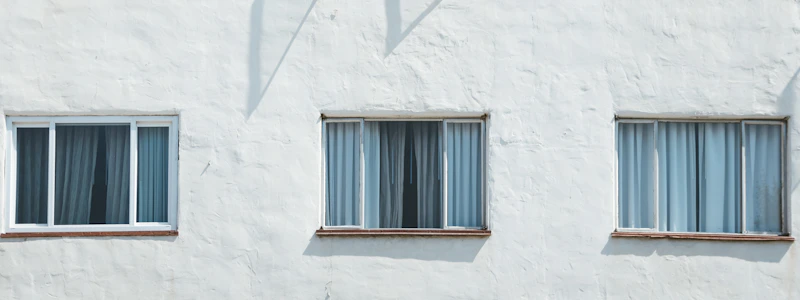Podcast
Questions and Answers
What is cell theory?
What is cell theory?
- Both A and B. (correct)
- The study of cellular structures.
- The theory that all cells come from other cells.
- The theory that all living things are composed of cells.
What protects the cell and helps maintain its shape in plant cells?
What protects the cell and helps maintain its shape in plant cells?
Cell wall
What term refers to the chemical activities of cells?
What term refers to the chemical activities of cells?
Cellular metabolism
What is the central vacuole's function in a mature plant cell?
What is the central vacuole's function in a mature plant cell?
What structure in an animal cell is composed of microtubule triplets?
What structure in an animal cell is composed of microtubule triplets?
What organelle is responsible for photosynthesis in plants?
What organelle is responsible for photosynthesis in plants?
What is the complex of DNA and proteins that forms chromosomes?
What is the complex of DNA and proteins that forms chromosomes?
What is the role of a mitochondrion?
What is the role of a mitochondrion?
What type of microscope achieves a greater resolution than a light microscope?
What type of microscope achieves a greater resolution than a light microscope?
A prokaryotic cell has a membrane-enclosed nucleus.
A prokaryotic cell has a membrane-enclosed nucleus.
What is the function of the Golgi apparatus?
What is the function of the Golgi apparatus?
What is the primary substance of the extracellular matrix (ECM)?
What is the primary substance of the extracellular matrix (ECM)?
Which of the following is a function of lysosomes?
Which of the following is a function of lysosomes?
What does the plasma membrane act as?
What does the plasma membrane act as?
The _______ contains the cell's genetic control center.
The _______ contains the cell's genetic control center.
What defines a eukaryotic cell?
What defines a eukaryotic cell?
What is a ribosome composed of?
What is a ribosome composed of?
What does endosymbiosis describe?
What does endosymbiosis describe?
Flashcards are hidden until you start studying
Study Notes
Cell Theory and Structure
- Cell Theory: All living organisms are made of cells; cells arise from existing cells.
- Cell Wall: A rigid layer in plants, bacteria, fungi, and some protists; maintains shape and offers protection.
- Cytoplasm: The semi-fluid substance within a cell, consisting of organelles and cytosol, situated between the membrane and nucleus.
- Plasma Membrane: A selective barrier composed of a phospholipid bilayer with embedded proteins and cholesterol.
Organelles and Their Functions
- Central Vacuole: Dominates mature plant cells, playing roles in storage, waste disposal, and maintaining turgor pressure.
- Chloroplast: Site of photosynthesis in plant cells; converts sunlight into chemical energy stored in sugars.
- Mitochondrion: The powerhouse of the cell, where ATP is produced through cellular respiration; enclosed by two membranes.
- Golgi Apparatus: Modifies, sorts, and packages proteins and lipids from the endoplasmic reticulum for delivery to their destinations.
- Lysosome: Contains digestive enzymes for breaking down waste materials and cellular debris.
- Peroxisome: Enzyme-filled organelle involved in lipid metabolism and detoxification of hydrogen peroxide.
Cell Components and Structures
- Cytoskeleton: A network of protein fibers, including microfilaments, intermediate filaments, and microtubules, that provides structure and facilitates movement.
- Ribosome: Composed of RNA and proteins, these structures synthesize proteins from amino acids; found in the cytoplasm or attached to the rough endoplasmic reticulum.
- Microtubule: Thickest fibers of the cytoskeleton, providing structural support and aiding in cell shape and movement.
- Intermediate Filament: Provide mechanical support to the cell and are made of fibrous proteins.
- Microfilament: The thinnest fibers aiding in cellular movement and maintaining shape, primarily composed of actin.
Genetic Material and Cellular Function
- Chromatin: A complex of DNA and proteins that forms chromosomes during cell division; exists in a less condensed form when the cell is not dividing.
- Chromosome: Structural unit of genetic material; contains genes and is visible during mitosis and meiosis.
- Nucleus: The control center of eukaryotic cells; houses genetic material and regulates gene expression; surrounded by a nuclear envelope.
Membrane Systems and Transportation
- Endoplasmic Reticulum (ER): A network of membranous sacs; can be rough (with ribosomes) for protein synthesis or smooth (without ribosomes) for lipid synthesis.
- Endomembrane System: A group of membranes that interact to modify, package, and transport lipids and proteins.
- Transport Vesicle: Carries molecules produced in the cell; fuses with membranes, releasing contents to the outside or into other organelles.
Light and Electron Microscopy
- Light Microscope (LM): Uses visible light to magnify specimens; limited resolution compared to electron microscopy.
- Electron Microscope (EM): Gives higher resolution images using electron beams; types include scanning (SEM) for surfaces and transmission (TEM) for internal structures.
Cell and Molecular Biology Concepts
- Endosymbiosis: Theory that mitochondria and chloroplasts arose from prokaryotic cells living symbiotically within larger cells.
- Glycoprotein: Molecules consisting of proteins attached to carbohydrate chains; play roles in cell signaling and recognition.
- Vesicle: Membrane-bound sac in the cytoplasm that transports and stores substances within a cell.
- Nucleolus: Substructure in the nucleus where ribosomal RNA is synthesized and assembled with proteins.
Other Key Terms
- Crista: Inner mitochondrial membrane infolding that houses the electron transport chain and ATP synthesis enzymes.
- Flagellum: Long appendage aiding in cell motility; structure differs between prokaryotic and eukaryotic cells.
- Glycoprotein: Macromolecules with short sugar chains important for cell interactions.
These notes summarize key concepts and functions of cells, organelles, and cellular structures for effective studying.
Studying That Suits You
Use AI to generate personalized quizzes and flashcards to suit your learning preferences.




